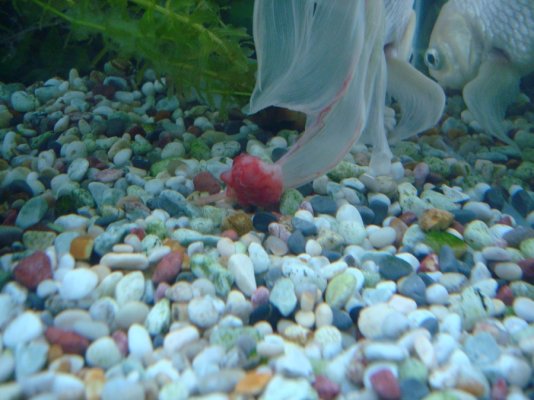Superb information - thank you! Of course the mind-bending bit of the video is the speed of the suture tieing in the demo in the last second or two!
In the amateur tieing off description I found on the web, the author first tried dental floss, but two attempts failed because it came undone (your point about 6 knots) and ended up using string. All a bit harrowing and it took three separate clove oil sedations, but the fish seems to have survived OK.
The growth doesn't have a narrow neck - it is growing on one side near the tip of the tail fin, so the suturing would be producing the same effect as cutting off the tip of the fin.
Imagine moving down the fin away from the fish to where the pointed bottom lobe of the fin narrows to about 1 cm. The next 1 cm of the fin is where the growth is, with another 1 cm of the very narrow extreme end of the tail fin sticking out beyond the growth. There is some kind of stiffening (cartilage?) along the bottom edge of the fin, which therefore runs through the growth.
So tieing it off would involve crumpling about 1 cm of fin (which one would otherwise cut) and would include the cartilage.
The blood vessels run more or less down each edge of this lobe of the fin, and can't be more than about 0.5 mm wide externally and so, I guess, can't have a bore more than perhaps 0.3 mm - maybe even less. So tieing them off individually would be very fiddly, and probably beyond my dexterity.
Could one cauterise them using heat - e.g. a very quick touch on each vessel with something like a fine soldering iron? Not exactly up to your professional surgical standards, I realise, but it is the sort of thing available in a domestic setting! Obvious precautions about using electrical gadgets in a wet setting, of course.
Otherwise your (much simpler!) suggestion seems to be:
a) Keep the fish's head and gills under the anaesthetic-containing water (making sure that mouth and gills are not obstructed).
b) With the tail out of water, cut off the fin tip that holds the growth, using something like a craft knife with a new and sterilised blade.
c) Put modest finger pressure on the blood vessels in the cut tip for, say, 5 mins.
d) Release pressure, and if all seems well, move fish to recovery tank.
That ought to be within my skill range (famous last words!)

